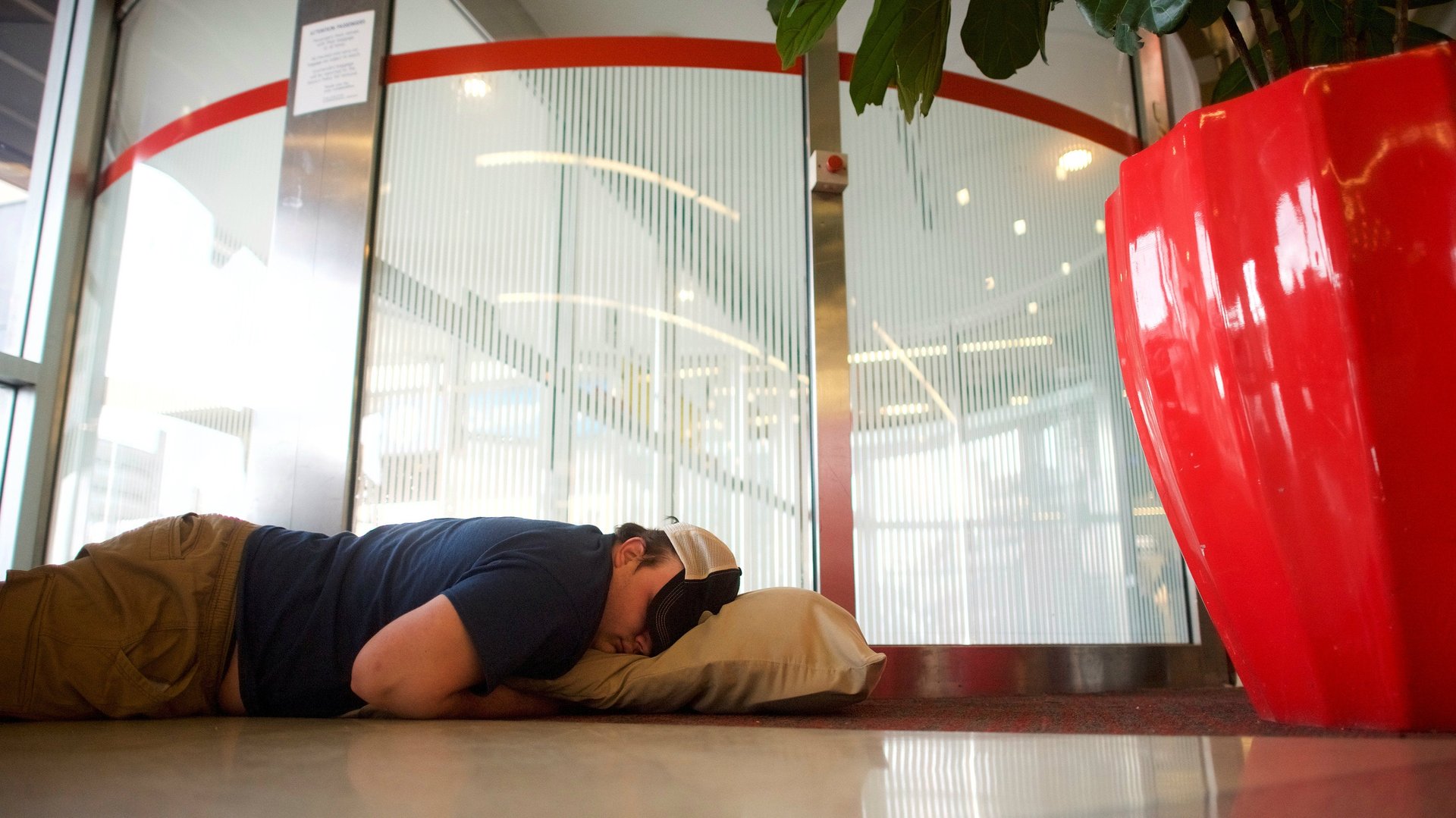Is it okay to sleep in an airport? It depends on who you ask
When you step inside an airport, the time-space continuum tends to shift. Sure, it may be 2 am—or 2pm—but why not drink a beer, eat a pizza, and buy a handbag–or better yet, take a nap?


When you step inside an airport, the time-space continuum tends to shift. Sure, it may be 2 am—or 2pm—but why not drink a beer, eat a pizza, and buy a handbag–or better yet, take a nap?
But the grand tradition of getting some shut-eye in the airport is now getting some shade thrown at it. Earlier this month, London’s Stansted airport banned sleeping in the terminal overnight—specifically between the hours of midnight and 2am—noting that passengers “should not arrive sooner than their scheduled check-in time” and that the “use of camp beds, sleeping bags and other portable sleeping aids” would not be allowed in or outside the terminal. Security guards now patrol Stansted for snoozers every 10 minutes and travelers who arrive for flights during that time are directed to sit (upright) in the arrivals section.
The airport said the reason for the shift was, at least in part, the up to 600 passengers per night who were “bedding down” to avoid paying for a hotel before an early morning flight. “Feedback shows passengers don’t like arriving at the airport for an early flight to find lots of people blocking access and getting in the way of both staff and those traveling,” the airport said in a statement to the UK’s Telegraph.
That said, not all airport sleeping is created equal. It’s one thing to be stranded due to an aircraft delay or weather issue—a scenario that, in many cases, obliges the airline to provide you with accommodation options—and quite another to plan to get some terminal shut-eye. The person who stretches out over four seats at a busy boarding gate for a flight that’s not theirs will also reliably raise ire.
In Europe, where a wave of short-haul, budget flights take off from regional airports very early every morning—like those from Stansted—sleepover passengers are often folks who balk at the idea of taking a taxi that costs nearly as much as their 6am flight. On the other hand, in international hubs like Dubai International and Singapore’s Changi—which operate as 24/7 entities more or less independent from the time zone outside—there are myriad amenities for sleepy travelers on connecting flights, including free rest areas and reclining loungers, as well as sleeping pods and terminal hotels.
This is perhaps why Stansted’s crackdown on sleeping in an airport is being received by some as so heartless. How can a place which is designed to operate around anti-social hours fault travelers for trying to get some sleep? The website sleepinginairports.net reviews airports based how well they accommodate tired passengers. Even before the latest crackdown, Stansted did not rate particularly well, with its lack of rest zones, showers, and access to charging ports.
The website notes that in the era of “early morning flights, long layovers, flight cancellations, snow storms and erupting volcanoes” sleeping in airports isn’t just for broke backpackers anymore—it’s a travel community. The good news is that according to this community, there are still plenty of airports where sleep—if you can get it—will be welcomed.